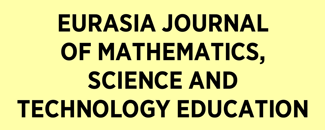Archives
Current issue
About
About us
Aims and Scope
Abstracting and Indexing
Editorial Office
Open Access Policy
Publication Ethics
Journal History
Publisher
Follow us: Twitter
Contact
For Authors
Editorial Policy
Peer Review Policy
Manuscript Preparation Guidelines
Copyright & Licencing
Publication Fees
Fee Waiver Policy for Doctoral Students
EJMSTE Language Editing Service
More
Statistics
Special Issues
Special Issue Announcements
Published Special Issues
Students’ Representational Fluency at University: A Cross-Sectional Measure of How Multiple Representations are Used by Physics Students Using the Representational Fluency Survey
1
The University of Sydney, AUSTRALIA
Publication date: 2015-08-16
EURASIA J. Math., Sci Tech. Ed 2015;11(6):1633-1655
KEYWORDS
ABSTRACT
To succeed within scientific disciplines, using representations, including those based on words, graphs, equations, and diagrams, is important. Research indicates that the use of discipline specific representations (sometimes referred to as expert generated representations), as well as multi-representational use, is critical for problem solving and developing understanding. This paper consolidates these ideas using the Representational Fluency Survey (RFS) over two years with 334 students at The University of Sydney. Analysis shows that there was a significant difference between the representational fluency of the 1st year Fundamental and Regular students (low level 1st year physics courses) compared to the 1st year Advanced, 2nd year, 3rd year and Postgraduate level students. The existence of this distinct gap is further supported by evidence from qualitative coding that students with a high level of representational fluency use a greater number of representations and more visual and symbolic representations to explain their answers. There is no mention of such an overall trend of variation of representational use in extant literature, largely because there have been no studies that compare representational fluency across closely spaced levels of physics, or science, learning.
Share
RELATED ARTICLE
We process personal data collected when visiting the website. The function of obtaining information about users and their behavior is carried out by voluntarily entered information in forms and saving cookies in end devices. Data, including cookies, are used to provide services, improve the user experience and to analyze the traffic in accordance with the Privacy policy. Data are also collected and processed by Google Analytics tool (more).
You can change cookies settings in your browser. Restricted use of cookies in the browser configuration may affect some functionalities of the website.
You can change cookies settings in your browser. Restricted use of cookies in the browser configuration may affect some functionalities of the website.

